
Smort78
-
Posts
769 -
Joined
-
Last visited
Posts posted by Smort78
-
-
I admit, I'm very disorganized coin wise... been getting some cleaning done and I found a GW6 Earth Turtle (the brown one) instead of selling it, figured I'd open an offer to trade it first. I'll keep the offer open until Sunday night, I'd prefer that it go to someone who wants it for their collection or to release versus straight to ebay. Send me a email please, I don't check pm's that much.
Thanks,
tsun
I would love to get my hand on a brown earth turtle, but I'm not sure I have anything you seek...
I'll send you a mail anyways..
-
Could not resist and bought the last AE

-
If you have the activation code you can go through the activation process again. Then you can change date and origin
-
What's the deadline? I have an idea but it's going to take me a little while to get to it...
*I have no rush - how long time do you need?
-
These are jpeg, but if anyone wants to make them into gif, they're all yours...
The boat on your coin seems to be pictured quite often to represent the Canal, so here's a rough image of that boat as it apears in most of those pictures. Anyone who want's to refine these and put them in the right format is welcome to submit them.
 16x16
16x16 32x32
32x32Good luck to you all.
I fixet it myself, so if I choose this icon you will get the credit!
-
A lot of great work here

-
Recieved mine today

Great work forthferalz! Well worth the wait!!!
and thanks to Pabloturtle for handeling the shipping!
-
Recieved my glass coins today - well worth the wait!!!
-
Drawing an icon is not my strong side, so I'll make it a cointest

I need both the 16x16 and 32x32 icon in gif format sent to post (at) stigroar (dot) net
The winner will recieve a Telemarkskanalen geocoin (free pick of edition)
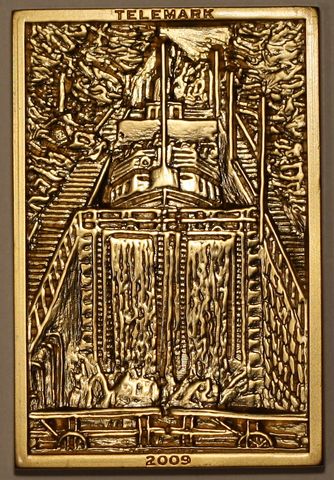
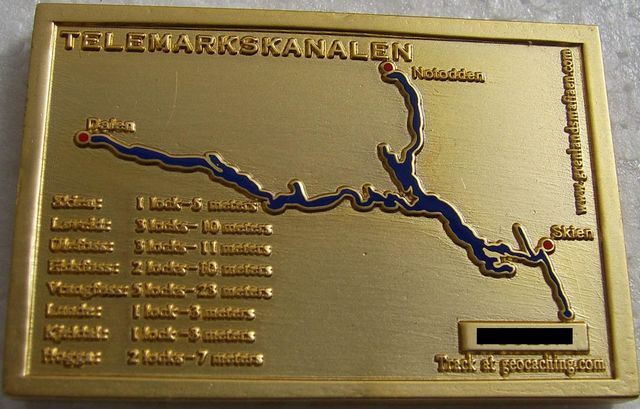
-
1. Participating: Email sent 04.02.09
2. Received Name: 20.02.09
3. Mission Complete
4. Mission Arrived!
-
Jellyfish!!! I got a golden pathtag and a golden Jellyfish geocoin
 as a surprise in the mail!! Thanks so much for my new favourite coin!
as a surprise in the mail!! Thanks so much for my new favourite coin!  I love his expressive eyes!
I love his expressive eyes! 
These are my Jellyfish swimming together:
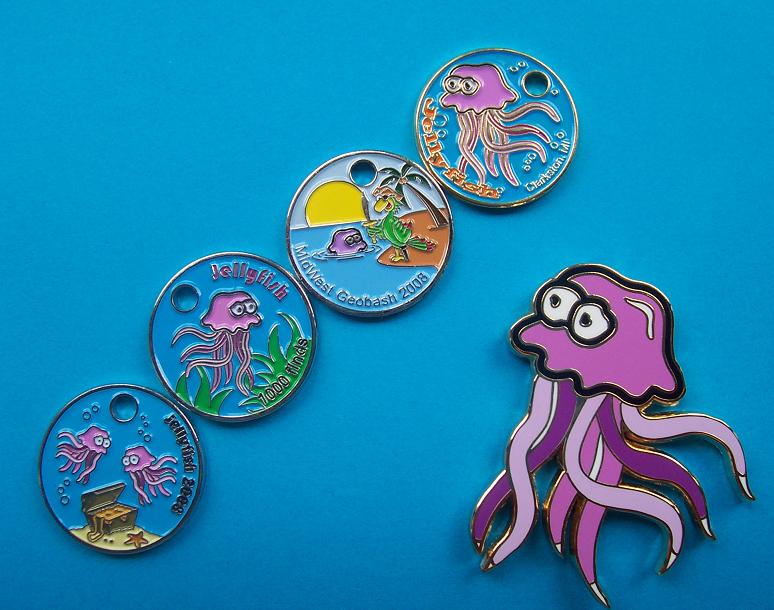
wow - great collection!
-
-
You can't de-activate it, but just start the activation process again and you will be able change the origin...
-
God bedring! (Get well soon from Norway)
-
1. Participating - 2/4/2008 email sent
2. Received Name
3. Mission Complete
4. Mission Arrived!
WOW - email sent a year ago...

Sorry - just had to...
-
1. Participating: Email sent 04.02.09
2. Received Name
3. Mission Complete
4. Mission Arrived!
-
My Geocoin Heart Desires:
That at every event, every gathering, and every meet & greet - someone gives someone their first coin as a gift. Preferably a kid!
Oh....that and a Moun10Bike v1....yeah...one of those

It's funny - at some point, I stopped "wanting" geocoins and just sort of figured I'd let what happens happen. The result has been a less frequent flow of new coins, but a far more meaningful one.
Well - then I can partially help you with your hearts desire.
We have an event on tuesday, and I'm bringing some coins

-
Reserved

-
Happy Birthday Liz!
-
I like the coin you have here. Which of the boats is pictured in the lock?? Can we find pictures of the boats mentioned in the Write Up?? I especially like how there is lots of spabe on the back, where a Local Cacher could have it personalized with engraving(at an engraving shop).
Edit for Spelling
The boat on the coin is Henrik Ibsen
For more information on the Telemark Canal and the boats - take a look at http://telemarkskanalen.no
there is a link "info in english" in the menu to the left
-
A new coin from Grenlandsmafiaen and hopefully the first of a series of coins with a theme from Telemark county in Norway.
Stats:
Size: 2"x1,35"
Thickness: 3,5mm
3D front / 2D back
Trackable at geocaching.com with it's own icon.
There will be 3 versions:
Antique Silver with soft enamel
Antique Copper with soft enamel
These two will be sold at hogwildstuff and geowebshop (Norway)
and my trade version - Satin Gold with imitation hard enamel
Antique Silver - front
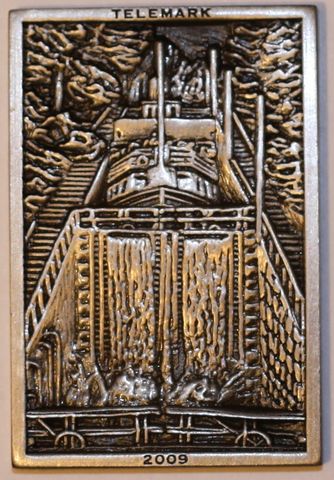
Antique Copper - front
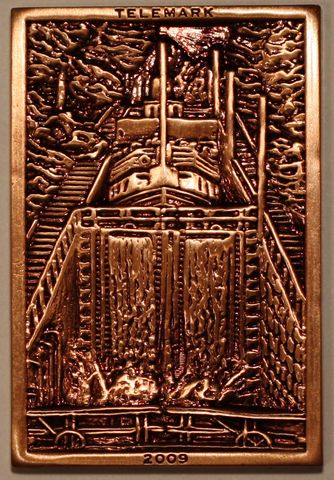
Satin Gold - front

Satin Gold - back

Some info from www.telemarkskanalen.no
The Telemark Canal and traffic on the Telemark Waterways
The Norsjø-Skien Canal with locks at Skien and Løveid is the elder of the two Telemark canals, built between 1854 and 1861. The idea of canalizing the Telemark watercourse was introduced as early as 1805, when political economist Christen Pram entertained the notion that to be able to sail up the waterfalls Klostefossen and Skotfossen would be a most welcome convenience. In 1831, Governor F. Wedel Jarlsberg brought to the attention of the government the need for improved communications between Norsjø and Skien. The construction of a canal at Løveid was sanctioned in 1844. Plans for the construction were drawn up by the director of the project, Engebret Soot, his assistant Waligorski, and the two directors Røiem and Johan Tullin Thams.
The Bandak-Norsjø Canal, also called the Bandak Canal was built between 1887 and 1892. The idea of building a canal between Ulefoss and Strengen was the brainchild of Axel Borchgrevink, manager of the Norsjø-Skien Canal, and Sætren, one of the directors. The motion was put before the Storting (Norwegian Parliament) in 1886 and construction commenced the year after. Fourteen locks were built along the 17 kilometres of canal between Ulefoss and Strengen, giving a total ascent of 57 metres (over 150 feet). The locks at Vrangfoss Falls are most impressive
and, in the words of Teknisk Ugeblad (Technical Magazine) in 1892: "a work of art which will bear perpetual witness to the skill of our engineers; it is this feat of engineering that will to the traveller be most fascinating and memorable".
The construction of the locks at Vrangfoss Falls and Hogga was both difficult and dangerous, but by June 1891, the canal was navigable by steamboat. The official opening took place on September 20, 1892.
Shipping on the Telemark watercourse
Most of the early traffic involved the transportation of stone from the quarries at Eidsberg in Lårdal. Regular steamer service was put into operation on the Telemark lakes in the mid-1800s. Before that, rowing was the only way of traversing these stretches of water. People could hire someone to row them, or they could rent a boat themselves. Inns along the watercourse provided accommodation for travellers. The longest stretches to row were divided into shifts. Transport between the lakes was either by horse or on foot. In 1851, the paddle steamer "Statsraad Stang" was launched at Fjærestrand in Solum and became the first steamship in regular service, operating between Fjærestrand and Tangen in Heddal. People were initially sceptical to this new means of transport that "smoked its way across the water", but their scepticism was soon replaced by growing confidence. In 1852, the paddle steamer "Sankt Olaf" was put into service on the Western lakes (Bandak, Kviteseid and Flå), operating between Strengen and Dalen. The locks of the Norsjø-Skien Canal (opened in 1861) were too narrow for the wide paddles of the steamship, so a new propeller-driven ship, the "Amtmand Aall", was purchased. Two other ships were acquired in 1866 and 1870: the "Nordsjø" and the "Løveid". The "Victoria", built in Oslo and put into service in 1882, is still running. She has been partially rebuilt and is now a popular tourist attraction.
Several companies operated on the Telemark lakes until the turn of the century. In 1882, a newly formed company launched the "Inland", an elegant, slender and fast vessel that gave the other companies stiff competition. The "Inland" was considered the finest of the Telemark ships and had the honour of ferrying King Haakon when he visited the canal in 1912. The ship was able to sail from Skien to Dalen and back in a day.
New companies started to operate on the Western lakes, and two new ships appeared. The "Thelemarken" was built in Oslo and riveted at Spjotsodd in Kviteseid, and the "Bratsberg" was built in Moss and assembled at Ulnes, near Strengen. The "Bratsberg" was built for Aamdal's Copperworks in Skafså and ferried copper ore from Bandaksli to Strengen.
Five shipping companies operated on the Telemark lakes at the end of the previous century, a situation which was not particularly practical. The solution was to merge the five companies into one, so the "Skien-Telemarkens Dampskibs-Aktieselskap" (The Skien-Telemark Steamship Company) was formed. A sixth company was also included in the merger. It ran one ship called the "D/S Lundetangen" (later renamed the "Gvarv", then the "Notodden", and finally the "Dalen").
The development of industry at Notodden and Rjukan increased the need for cargo boats, of which the first was the "Dyre Vaa", built at Porsgrunn in 1903. Several more came into use after Norsk Hydro was established at Notodden in 1905. The new ships were the "Aasmund Vinje" (1906), the cargo boats "Notodden" (1908) and "Sterke-Nils" (1913), and, not least, the elegant passenger ship the "Henrik Ibsen". Before the outbreak of World War I, this company alone ran twelve ships. In 1908, the steamship "Sand" was put into regular service between Skien and Skotfoss.
These earliest ships were fuelled by wood; people living along the lakes were able to supplement their income by selling wood to the steamship companies.
The ships had a first-class section towards the stern, with red plush-upholstered seats. Those travelling second class had to make do with bare wooden benches in the bow. Goods were loaded and unloaded using a winch. The crew usually comprised the captain, first mate (who was also responsible for collecting the fares), engineer, stoker and deck hands. Icebreakers were used during winter to clear lanes through the ice. The steamers often had to push from behind, positioning their bows in a special wooden block at the stern of the icebreaker and lending their steam power to the task of crushing the ice. By 1957, motor cars had become so common that it was uneconomical to run a passenger service on the waterways, and all regular services were discontinued. In 1961, however, the company "A/S Turisttrafikk" was formed, offering tourist trips on the waterways from Skien to Dalen. After undergoing a thorough overhaul and modernization, the "D/S Victoria" was, in 1963, brought back into service on this route. The annual number of passengers has steadily increased, and there are now several boats operating on the Telemark Canal.
-
I love this coin! Email reservation sent for three!

- Antique Gold with Dark Green Glitter
- Antique Copper with Copper Glitter
- Satin Black Nickel with Light Blue Glitter
Thanks and Happy caching!
Tom
Me too

- Antique Gold with Dark Green Glitter
-
Recieved the spare pins in the mail today and my coin is fixed

Thank you for the great service!
-
I got some help from IBcrashen - Thank you!


Earth Turtle Oceania Geocoin
in Trackables
Posted
Another great design!!!